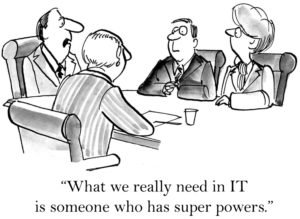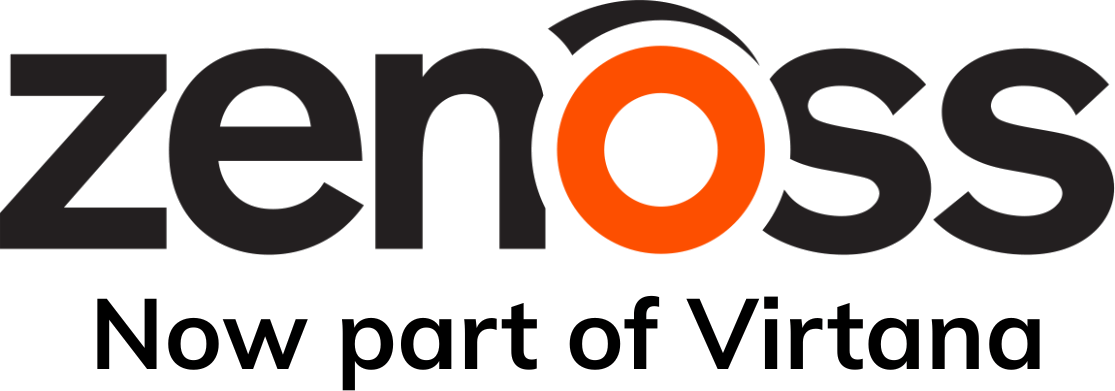
As Zenoss marketing strategist Deepak Kanwar said in the recent webinar Taming Your Private Cloud: A Survival Guide for Hybrid IT Ops:
-
Hybrid IT is a mix of legacy, virtualized and public clouds and it is coming your way whether you are ready or not. And IT Ops, you will be expected to manage it!
In the introduction of the new Zenoss ebook written in conjunction with this webinar, Hybrid IT Operations: 5 Ways to Prepare for the Inevitable, Deepak explains why hybrid IT is here whether you like it or not:
-
Everyone is familiar with the idea of rapid application deployment—through their iPhones and tablets—and the expectation is that the business should be able to launch and access services over the Internet just as quickly. Whether or not it is in compliance with IT policy, [your users] may already be using public cloud-based applications in the workplace—an online collaboration site, a file sharing app, or cloud-based backup. And why wouldn’t they? After all, these services make it easier for them to do their jobs.
If you are considering or are in the process of transforming your IT operations to support this new hybrid IT model, you really need to watch this webinar. It will give you a solid grasp of the changes occurring, along with five great tips to make sure you’re ready “when you get hit with this,” as Deepak put it.
Kent Erickson’s idea of “fun”
Zenoss senior product manager and webinar cohost Kent Erickson talked about a “fun experiment” he likes to pull on IT departments.
Kent tells them:
-
Hey, I’m going to spin a new application here, we need a web server, a database server, and I’d like to have this data inside. So can we get that up this afternoon because I’ve tried [running a version] at AWS and already got it running?
Kent asks this knowing full well these IT organizations need days, even weeks, to spin up the needed resources. So cruel! But Kent toys with these operations groups to make a point: The old-fashioned way of provisioning services doesn’t sit well with business owners, whether they are people in your HR department needing to run a new service or an outside customer. As Kent said:
-
In an agile organization, it might take a day, but I could have it running outside the organization immediately. Why should I [as business owner] even talk to IT if I can get it done this afternoon without talking to them?
Kent said this mentality drives the need for hybrid cloud services from a business owner’s perspective. They want to power up and spin down virtual machines (VMs) without always having to go through traditional service provisioning protocols. They don’t care where the services are hosted; they just want to be able to use them.
In the Hybrid IT ebook, Deepak discusses self-service provisioning and how hybrid IT enables this (much) faster means of deployment, using the already mentioned HR example to prove his point:
-
An HR Director wants to roll out a new application (that just became available from the company’s benefits provider) to all employees worldwide in time for annual benefits enrollment. It needs to be deployed, tested and live within a week to give employees time to meet the enrollment deadline.
-
Hybrid IT operations makes it possible to meet these tight turnaround requirements. You can roll out the application on either a public or private cloud and get the testing done in less time than it would ever take to order a new server, provision it, roll out the application, perform testing and prepare for the go-live day. Leveraging Hybird IT simply allows you to reduce the time to value for your services.
Not surprisingly, the reduction of time to value appeals to the two other stakeholders that Kent and Deepak said are pushing for the adoption of hybrid IT: the CFO and the CIO.
‘C’ Stands for ‘Crunch’
CFOs and CIOs are feeling pressure internally as well as externally from customers. Early in the webinar Deepak cited a 2012 IBM “Global Chief Executive Study,” in which a group of CEOs were asked, “What are the three most important ‘external’ forces impacting your firm over the next three years?”
Out of several factors, including:
- Macroeconomic factors
- Regulatory concerns
- Globalization
- Market factors
“Technology factors” came in first, chosen by 71% of those surveyed. Interestingly, “Technology factors” had never been the in the top spot since IBM first put out this survey back in 2004.
Said Deepak:
-
CEOs want IT to be a top differentiator. If IT isn’t responding to the needs of customers or business unites, that differentiator is a deterrent to their success.
Furthermore, CEOs want IT to differentiate them without bankrupting their companies. They need their CFOs to reduce IT expenses without reducing the value it brings to the business, and they need their CIOs to deliver the agility expected by business owners while keeping capital and operating costs in check.
Said Deepak:
-
The CFO keeps hearing how much a virtual machine costs using AWS and wants to replicate or at least come close to those costs internally. She continues to ask the CIO, “Why are we two-to-three times more expensive than AWS?”
The CIO can cite many reasons, ranging from security concerns to longstanding protocols for provisioning services. Meanwhile, he sees his IT budget continue to shrink while at the same time his responsibilities increase. He needs an alternative to the current mishmash that makes up his IT infrastructure. A hybrid IT alternative.
But What About All the Complexity? Help!
Pity that poor CIO. No one—neither his CFO nor his customers seem to comprehend the mind-boggling complexity of the infrastructure underpinning these apps and services. Deepak brought up statistics from a 2013 Forrester study commissioned by Zenoss showing the number of “environmental components” that are currently being monitored in their organizations. Here are a few representative figures:
- 35% had more than 1,000 physical and virtual servers, with 5% having more than 20,000
- 33% had between 500 and 5,000 network components
- 32% used 301 or more applications in their business (web apps and client/server apps)
- 53% distributed their data centers over eight or more physical locations
Given the “mishmash” of infrastructure involved in a typical data center, it’s no wonder the thought of deploying and maintaining easy-to-access, always on hybrid IT operation seems daunting.
As I mentioned in the beginning of this recap, Deepak and Kent detail five key recommendations for surviving the move to hybrid IT ops (hence the title). Those tips are invaluable and fairly easy to implement. Kent even does a two-part demo showing how these tips may be put into action using a cloud-based combination of ServiceNow for provisioning and incident management, Chef for provisioning VMs, and of course, Zenoss for monitoring.
So grab your notepad, find a comfortable chair and watch this webinar NOW.










